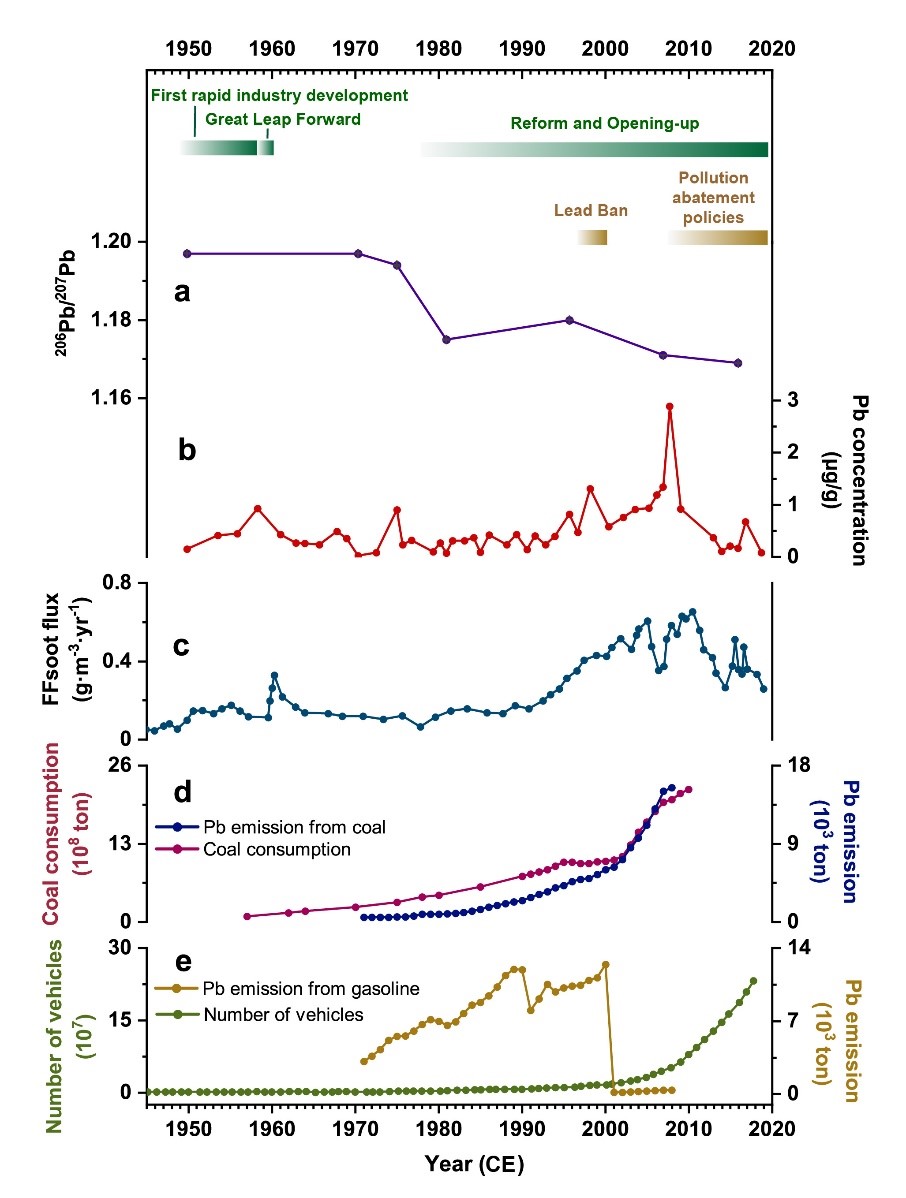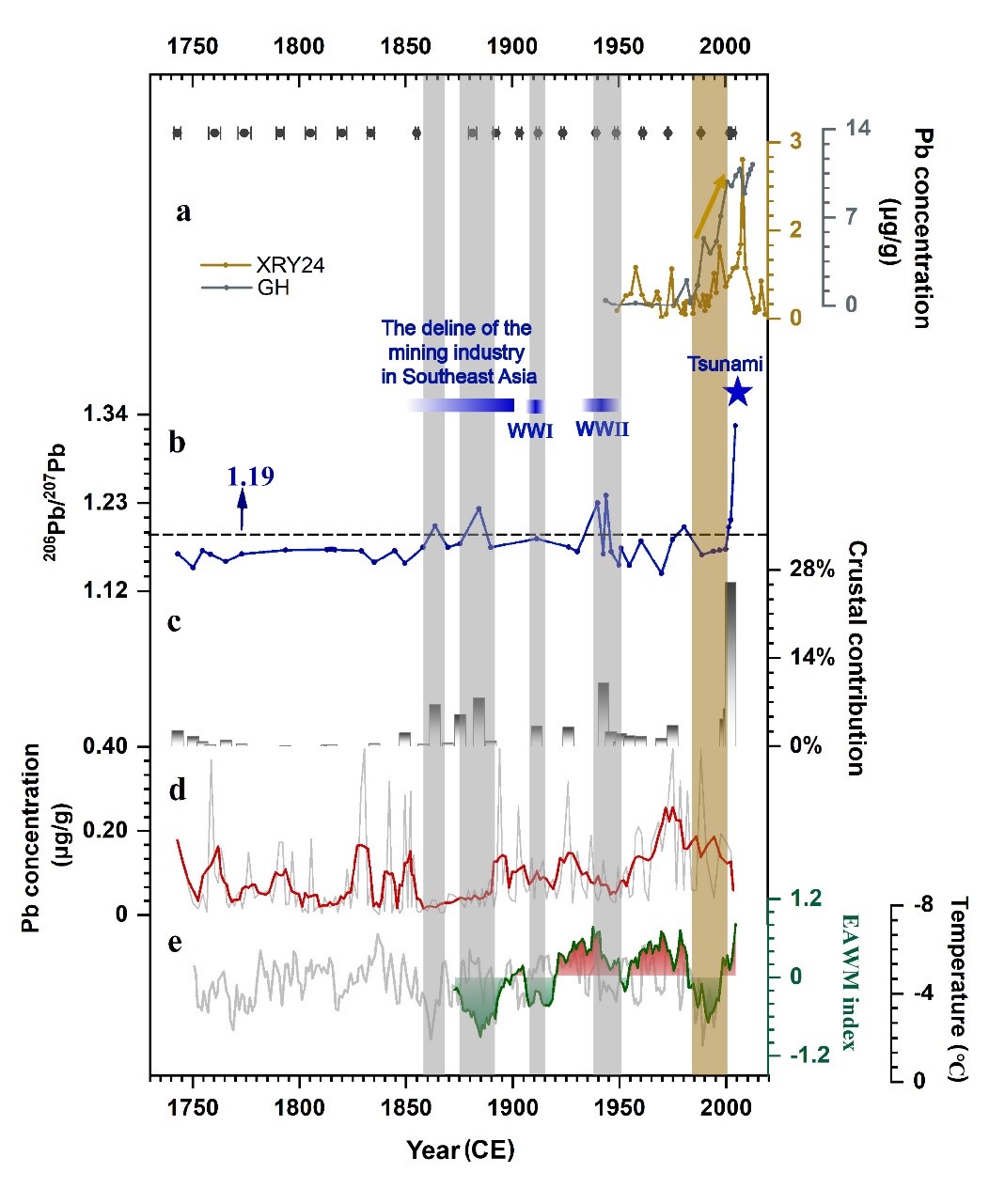Researchers Reveal Anthropogenically-induced Atmospheric Pb Cycle in Low-latitude Asia
During the last several decades, environmental lead pollution (Pb) has posed a significant threat to public health and ecological systems due to its harmful and irreversible effects. It has also been proposed that the distinct Pb pollution signals in geological archives could define the new Anthropocene epoch.
As a result, scientists are encouraged to focus on global Pb pollution patterns derived from humans. While previous Pb studies provided a deep insight into Pb discharge, migration, and deposition at mid- and polar latitudes, the reconstructions of regional Pb pollution at low latitudes are very limited.
A joint research group led by TAN Liangcheng from the Institute of Earth Environment of the Chinese Academy of Sciences, collaborated with other researchers from Thailand, the United States, and Israel, examined for the first time the effects of atmospheric circulations and anthropogenic Pb emissions on the regional Pb cycle in Asia-Australia by using stalagmite-based Pb records from Klang cave in southern Thailand and Xianrenyan cave in Guangdong province, China.
They found that the Pb records of XRY24 from Xianrenyan cave revealed the Pb emission history in Guangdong province over the past ~70 years (Fig. 1). While, located in the transition region of Asian-Australian monsoons, the Pb records of TK131 from Klang cave revealed Pb emissions in a large region (Fig. 2), with local Pb emissions and long-distance transport of Pb pollutants jointly affected the Pb cycle in the low-latitude Asia-Pacific region.
Moreover, the long-distance transport of Pb pollutants was influenced by the East Asian Winter Monsoon (EAWM) strength with high (low) amount of Pb pollutants from the upwind territories transported to the study area during the strong (weak) EAWM before 1980 AD. But it was more affected by regional industrial Pb emissions after 1980 AD. This indicated that ever-increasing anthropogenic emission could surpass the atmospheric circulation controls on the regional Pb cycle, offering a new perspective on understanding the relative influence of natural and anthropogenic forcing.
Besides, they suggested that strict pollution abatement policies should be implemented to reduce regional Pb pollution during the Anthropocene. They also confirmed that speleothems could record atmospheric Pb depositions on a large scale, which would play a crucial role in studying the global Pb cycle.

Fig. 1 Comparisons of stalagmite records of XRY24 with statistical economic and Pb emission data. (Image by WANG, et al)

Fig. 2 Comparisons of stalagmite records of TK131 with EAWM and geological Pb records in China. (Image by WANG, et al)
This work, published in Global and Planetary Change, was supported by the National Nature Science Foundation of China (41991252 to L. T.), the Chinese Academy of Sciences (xbzg-zdsys-202217 to L. T.), and the Thailand Science Research and Innovation Fund Chulalongkorn University (DIS66230002 to S.C.).
Contact: Bai Jie, Institute of Earth Environment, Chinese Academy of Sciences, Xi'an, China. Email: baijie@ieecas.cn
 © 2015 Institute of Earth Environment,CAS
© 2015 Institute of Earth Environment,CAS Address:No. 97 Yanxiang Road, Xi'an 710061, Shaanxi, China

 Location :
Location :